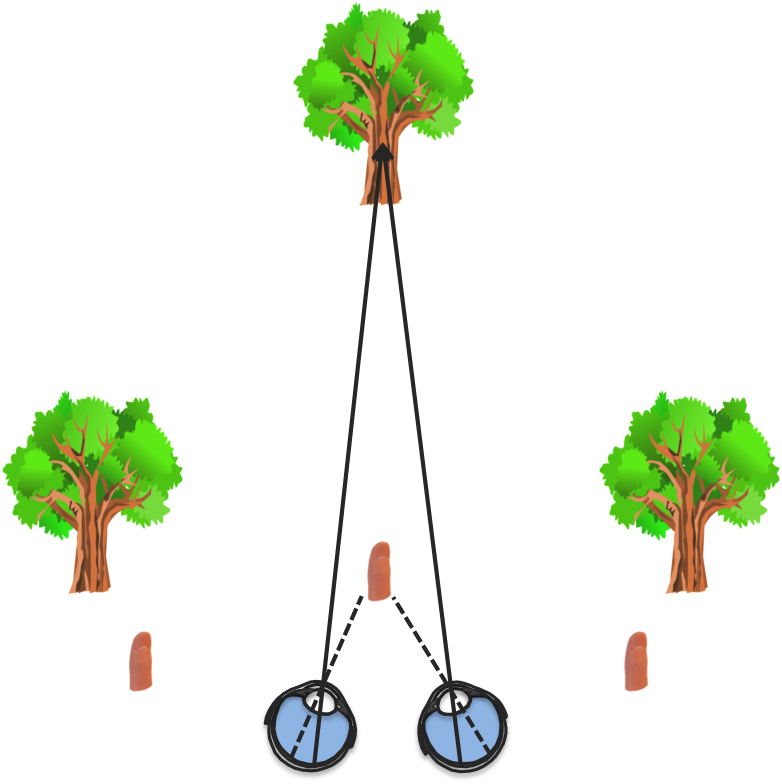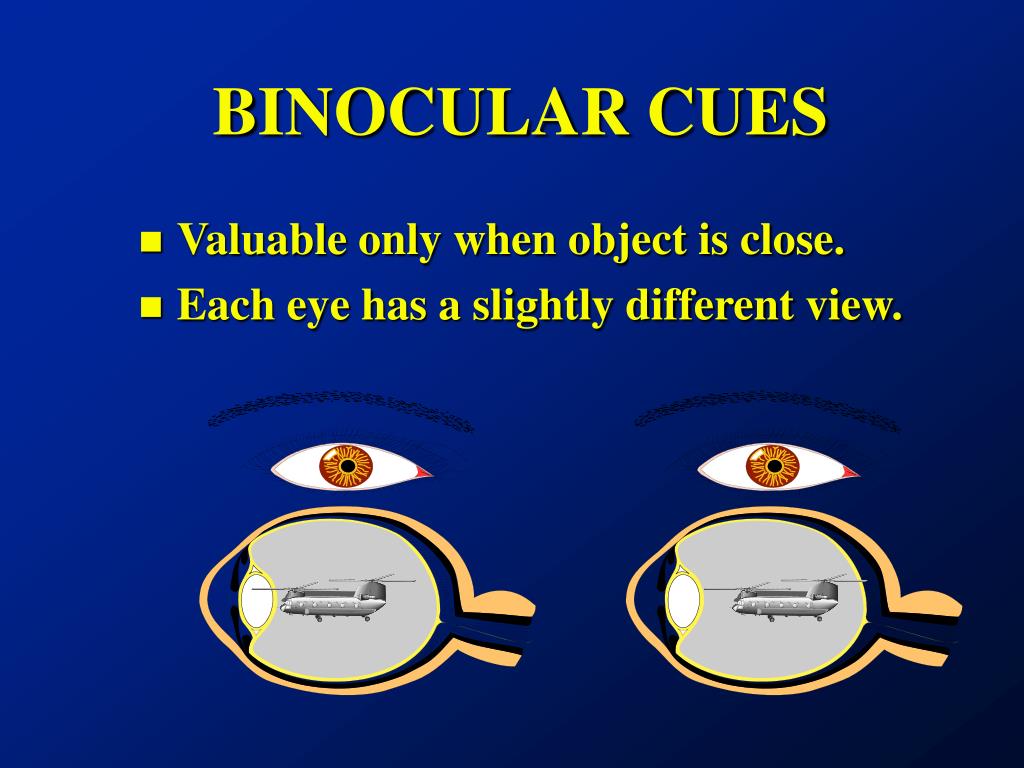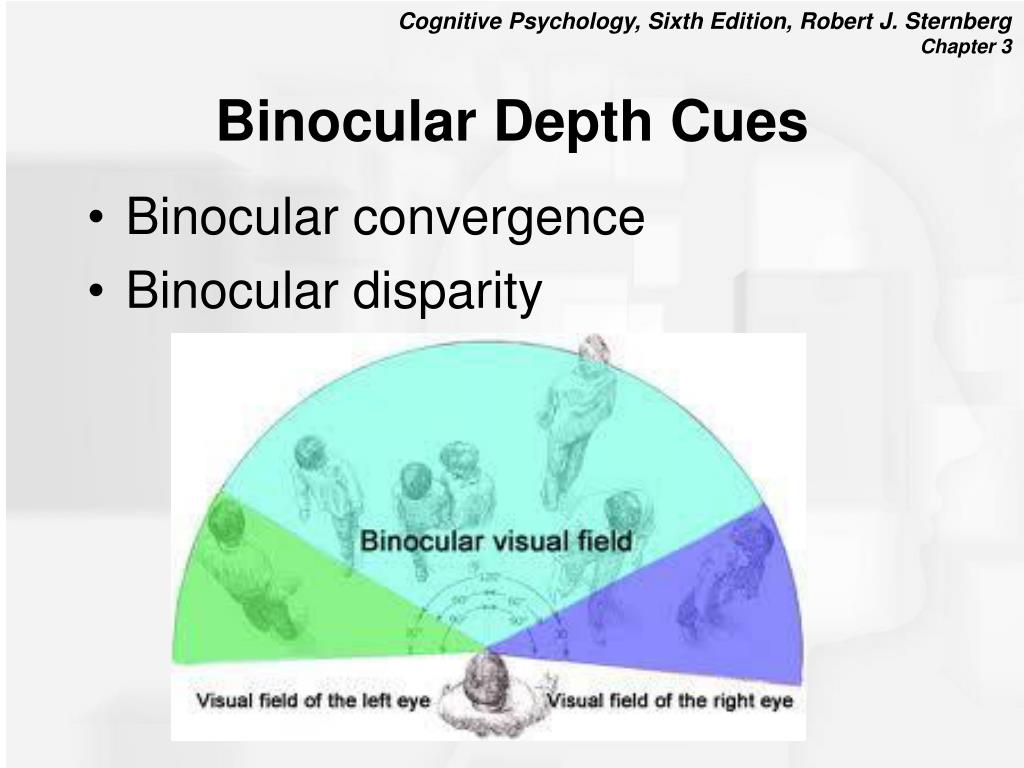


If you hold a hand out in front of you at arm’s length, and then slowly bring it closer to your face. Like with retinal disparity, there’s a simple way of observing this binocular cue in action. It uses the information from the eye muscles (feedback) to gauge how much the eyes have rotated, and therefore how far an object is. Binocular convergence is in short, the amount of inward rotation your eyes have to do in order to focus on an object.īinocular convergence is a proprioceptive sense (a sense that shows our position in space). The brain processes these muscle movements into information that is used for depth perception. Your eye muscles must contract and relax in order for you to focus on objects at different distances. It refers to the amount of rotation your eyes have to do to focus on an object. Retinal Disparity Definition: the difference in the 2 images seen by each eye due to the difference in angle each is viewing an object from.īinocular convergence is the other important cue that enables us to determine how near or far things are away from us. We then wear special glasses that enable the left eye only to see the image from the left camera, and the right eye only the right camera.
#Binocular depth cues movie#
The movie is filmed with 2 cameras each representing a slightly different view of the scene. The technology uses this binocular cue to great effect and tricks our brains into seeing a greater depth of field. You’ll notice that the image seen through each eye will be more similar with increasing distance from you.ģD movies that you see at the theater are a great example of retinal disparity. This time if you hold out your hand in front of you, but now start close to your face then slowly move it away. A far away object contains little disparity in the 2 images seen by each eye. The larger the difference (disparity) in the 2 images, the closer an object is to you. It seamlessly merges these two images into the picture that we see that contains the 3D information that is crucial to us.

Our brain effectively triangulates the distance to an object, using the two different images that are eyes present to us. You’ll notice that the image “shifts” slightly each time. This point is illustrated best if you hold your hand out in front of you and look at it through one eye at a time. Our eyes are separated by an average distance of 6.3cm on our face, this means they each see life from a slightly different angle. Otherwise known as binocular parallax, retinal disparity addresses the fact that our two eyes each see different images. Some of the links below are affiliate links, meaning, at no additional cost to you, we may make a commission if you click through and make a purchase. These are retinal disparity and binocular convergence. In this article, we’ll take a look at the two binocular depth cues. It allows us to easily distinguish between things that are near and far away.īinocular cues are sensed with our eyes and this information is fed to our brain which processes the information for us to use. It’s our ability to judge where an object lays in space relative to our own position. These cues are vitally important to us, as without them we would have no idea how steep the path is that we’re climbing, or how far away an incoming ball is.īinocular cues allow us to gain a 3-dimensional interpretation of the world and allow us to navigate through it so effortlessly.ĭepth perception is otherwise known as stereopsis. We also discuss binocular vision and why it benefits us.īinocular cues are the information taken in by our 2 eyes and then processed by our brain in order for us to perceive depth or distance. In today’s post, we explain the two binocular cues that give us depth perception.


 0 kommentar(er)
0 kommentar(er)
